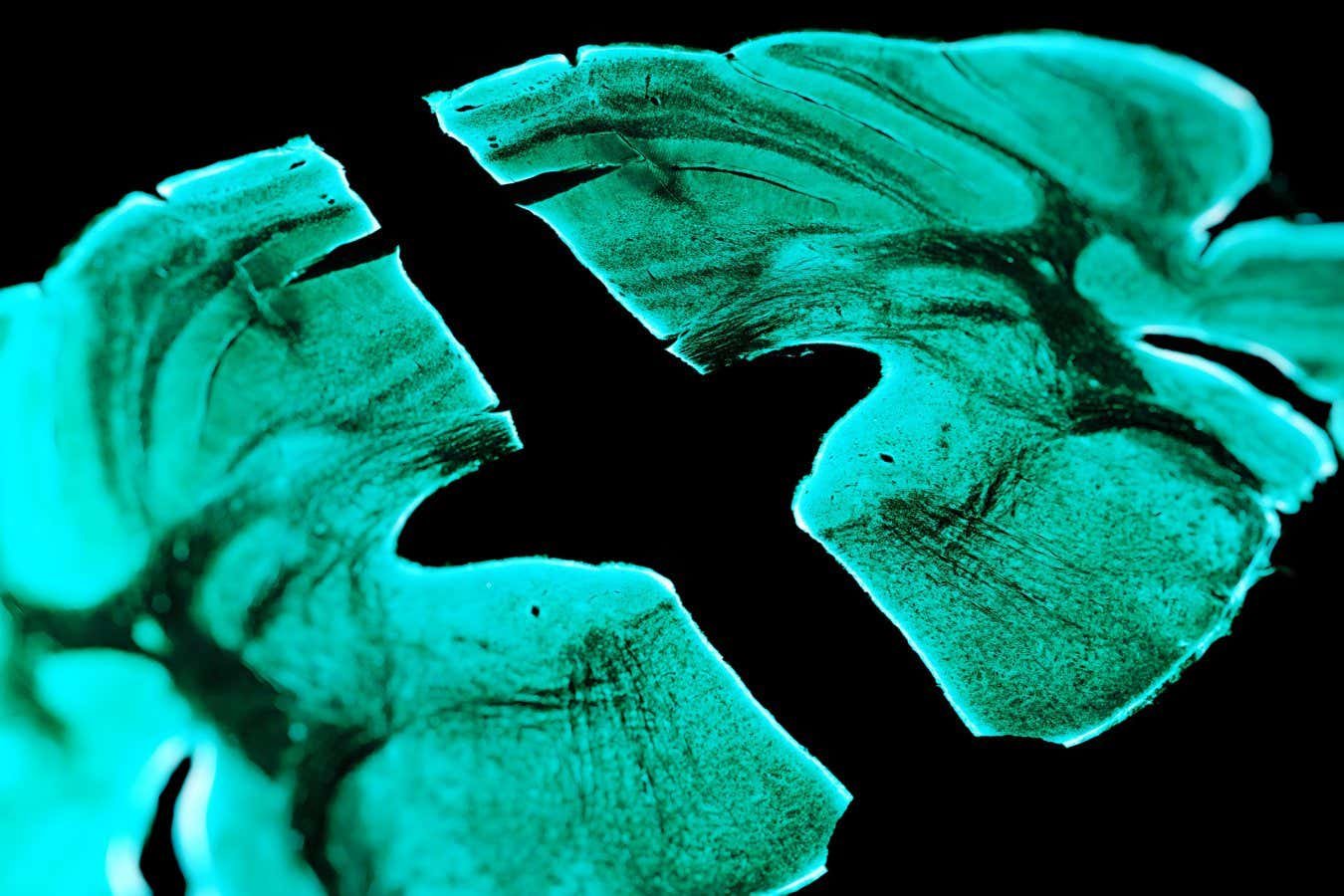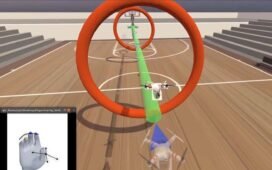
A section of a mouse brain viewed on a slide
Stu Gray / Alamy
A newly identified brain pathway in mice could explain why placebos, or interventions designed to have no therapeutic effect, still relieve pain. Developing drugs that target this pathway may lead to safer alternatives to pain medications like opioids.
If someone unknowingly takes a sugar pill instead of a pain reliever, they still feel better. This placebo effect is a well-known phenomenon in which people’s expectations lessen their symptoms, even without effective treatment. “Our brain, on its own, is sort of able to fix the pain problem based on the expectation that a medication or treatment might work,” says Grégory Scherrer at the University of North Carolina at Chapel Hill.
To understand how the brain does this, Scherrer and his colleagues replicated the placebo effect in 10 mice using a cage with two chambers. One chamber had a burning hot floor, while the other didn’t. After three days, the animals learned to associate the second chamber with pain relief.
The researchers then injected the rodents’ brains with a molecule that causes active neurons to glow when viewed under a microscope. They placed the mice back into the cage – but this time heated both floors.
Although the chambers were now equally hot, the animals still preferred the second one, displaying fewer pain symptoms such as paw licking while there. They also had greater activity in neurons in the cingulate cortex – a brain region involved in pain processing – compared with nine mice that weren’t conditioned to associate the second chamber with pain relief.
Further experiments revealed a pathway connecting these pain-processing neurons to cells in the pontine nuclei and cerebellum – two brain areas with no previous known role in relieving pain.
To confirm this circuit relieves pain, the researchers used a technique called optogenetics, which turn cells on and off with light. This let them activate the newly discovered neural pathway in a separate group of mice placed on a hot floor. On average, these animals waited three times as long before licking their paws as those that didn’t have the circuit activated, indicating they felt less pain.
If this neural pathway does explain the placebo effect, “that can open new strategies for drug development”, says Luana Colloca at the University of Maryland, who wasn’t involved in the study. “If we have drugs that activate placebo effects, that will be a wonderful strategy for pain management,” she says.
“The obvious caveat is that the placebo experience in humans is obviously much more complex [than in animals],” says Scherrer. However, he still believes these findings will translate to people because rodents and humans have very similar pain pathways.
Topics:








